It was the second biggest drug bust in American history.
On the evening of June 16, 2019, as skies grew cloudy over Delaware Bay, a giant container ship lumbered towards the Port of Philadelphia.
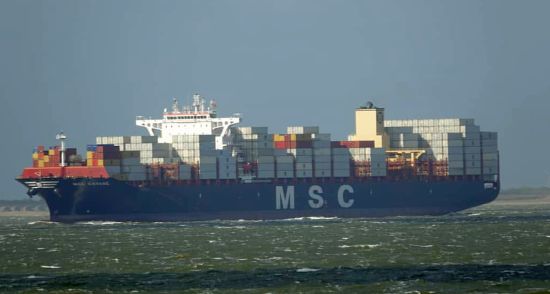 Longer than three football fields laid end to end, The Mediterranean Shipping Company’s MSC Gayane (2nd largest in the world) is one of the world’s newest classes of ships, the ULCVs – Ultra-Large Container Vessels.
Longer than three football fields laid end to end, The Mediterranean Shipping Company’s MSC Gayane (2nd largest in the world) is one of the world’s newest classes of ships, the ULCVs – Ultra-Large Container Vessels.
But before arriving at the Port, the ship was intercepted by boats carrying armed agents from a multi-agency task force, who climbed rope ladders and then swarmed aboard the giant ship. Before they were done, they’d seized almost 20 tons of cocaine.
According to the Philadelphia Inquirer, “They (the agents) were there, they said, to check to see if locks on the steel containers that hold millions of dollars’ worth of goods were intact. “The seals on some boxes didn’t look right,” stated someone with direct knowledge of the matter.”
It was a fig leaf attempting to hide their secret knowledge. But it didn’t work. In a matter of months, the top two leaders of a Mafia clan in Kotor, Montenegro would be dead.
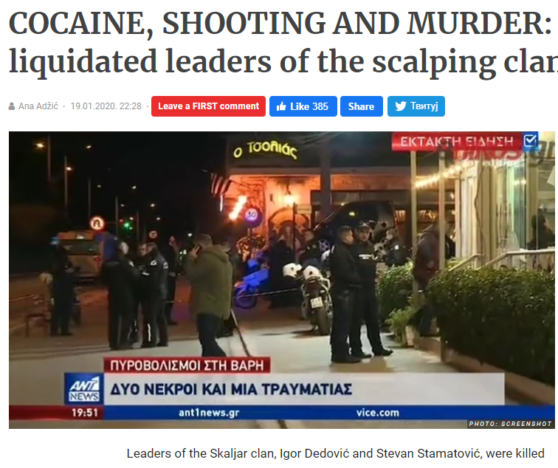 The dead men were assassinated in front of their families in a restaurant in Athens, suspected of having “snitched out” the massive cocaine move underway on the container ship, because it belonged to the other Mafia clan in Kotor, with whom they are in the middle of a long and very bloody civil war, with murders and assassinations taking place across Europe from Berlin to Vienna to Valencia, Spain.
The dead men were assassinated in front of their families in a restaurant in Athens, suspected of having “snitched out” the massive cocaine move underway on the container ship, because it belonged to the other Mafia clan in Kotor, with whom they are in the middle of a long and very bloody civil war, with murders and assassinations taking place across Europe from Berlin to Vienna to Valencia, Spain.
It wouldn’t seem like the tiny town of Kotor, population 30,000 in the middle of tourist season, would need, or be large enough, to support two feuding Mafia clans.
“All quiet on the Philly front”
In Europe, the war rages on. But in Philadelphia, where the 20 tons came to rest, things are remarkably quiet. The U.S. Attorney’s investigation has produced just one arrest of any consequence, and that came at the time of the seizure, when they busted the ship’s Second Mate, Ivan Durasevic.
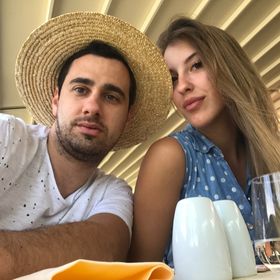 Ivan Durasevich hardly looks the part of a drug kingpin. He doesn’t look really menacing. But he’s had to do. Because, other than a trainee, and the ship’s fourth electrician, who both recently pled guilty, he’s all U.S. Attorney William M McSwain has to show for his year-long investigation.
Ivan Durasevich hardly looks the part of a drug kingpin. He doesn’t look really menacing. But he’s had to do. Because, other than a trainee, and the ship’s fourth electrician, who both recently pled guilty, he’s all U.S. Attorney William M McSwain has to show for his year-long investigation.
Moving seven shipping containers bursting with coke across three continents is clearly a bigger logistics task than anything anyone in Second Mate Durasevic’s pay grade is ever asked to do.
That fact alone should raise skepticism of the U.S. investigation. However, the government’s case also suffers from a number of omissions, falsehoods, and deliberate lies, as well as the inordinate level of secrecy which permeate the case.
Ivan Duresevic, 29, and Fonofaavae Tiasaga, 28, almost immediately confessed to helping load the cocaine onboard. Their names were both visible in the Federal criminal complaint. Until, suddenly, they weren’t.
Durasevic, the first crewman to ‘roll’ on his fellows and plead guilty, was suddenly ‘disappeared’ from the government’s own Public Access to Court Electronic Records site, called PACER.
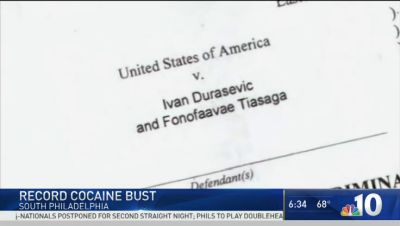 A Federal Court Clerk later told me that —in an unprecedented move— the entire case had been sealed retroactively. But Copies of the complaint had however been visible in local TV news coverage in the days after the seizure. I got mine from Philadelphia’s NBC-10 assignment editor John Taylor, whose station had aired screen grabs from the indictment, which was eventually published on the internet.
A Federal Court Clerk later told me that —in an unprecedented move— the entire case had been sealed retroactively. But Copies of the complaint had however been visible in local TV news coverage in the days after the seizure. I got mine from Philadelphia’s NBC-10 assignment editor John Taylor, whose station had aired screen grabs from the indictment, which was eventually published on the internet.
The identity of people charged with felony crimes is public record in American courts. But all court documents in the case were sealed, including the names of the defendants. The criminal charges were being treated as a matter of grave national security.
Three days after the massive cocaine bust aboard the container ship, sources leaked the names of three sailors from Kotor, Montenegro being charged: Aleksandar Kavaja (25), Boško Marković (37), and Nenad Ilić (39). Their names were published by the Philadelphia Inquirer.
I suppose that’s one way to get the news.
Finally, what little information has been released in the proceedings by U.S. Attorney William M. McSwain is openly derided by maritime experts.
And that can’t be good.
Serb newspapers cover what U.S. papers won’t
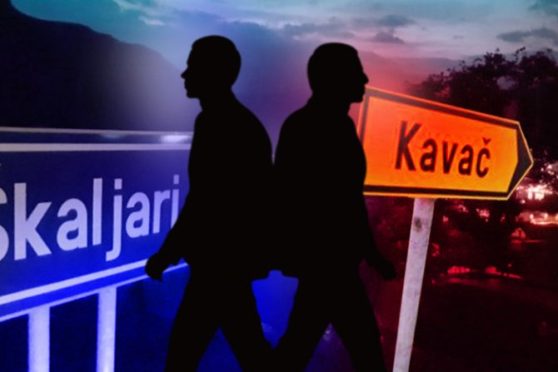 One crucial piece of evidence did come to light last week. A sailor aboard the ship, Aleksander Kavaja, 27, became the third person to plead guilty in the case.
One crucial piece of evidence did come to light last week. A sailor aboard the ship, Aleksander Kavaja, 27, became the third person to plead guilty in the case.
His plea shed light on the case, thanks to Serbian-language newspapers, which follow the case the way the New York Post would cover a World Series between the Mets and the Yankees.
That’s because at least half of the crewmen on the ship, including the captain, are from Kotor, Montenegro, in the former Yugoslavia of Slobodan Milosevic.
The same Kotor Montenegro that hosts two feuding Mafia clans? The very same… And U.S. Attorney William M. McSwain hasn’t breathed a word of it. Nor will he.
The leader of “Group America,” Mileta Miljanic, was the first from Montenegro to enter the big-time narcotics business with the Colombian cartels.
Serb news tends to lean towards the tabloid end of the spectrum.
“SHOCK DISCOVERY! A Montenegrin sailor who was arrested during the largest cocaine seizure in history is a relative of a man who tried to KILL TITO 3 times!”
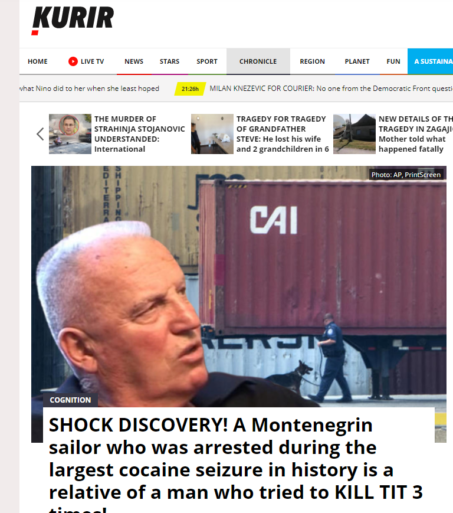 The guilty crewman belonged to a Mafia clan in Kotor, Montenegro which for decades had been led by a close relative.
The guilty crewman belonged to a Mafia clan in Kotor, Montenegro which for decades had been led by a close relative.
Nikola Kavaja was famous in Serbia for having spent several decades working as an assassin for the CIA, during which he made no fewer than four assassination attempts on the life of Yugoslav communist strongman Marshall Tito.
Did someone mention the CIA?
“Someone from the United States is protecting them, ” an Italian police officer told OCCRP.
Group America
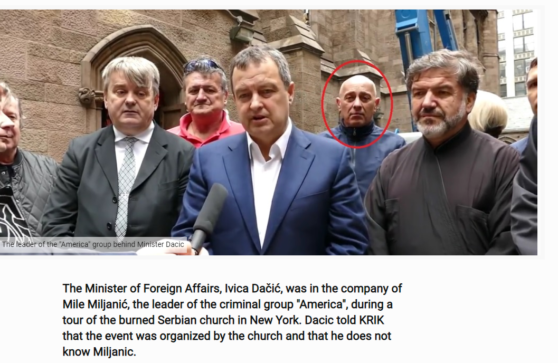 Transnational organized crime is everywhere. But there’s a taboo against acknowledging it. It’s easier to see in a ”foreign’ culture:
Transnational organized crime is everywhere. But there’s a taboo against acknowledging it. It’s easier to see in a ”foreign’ culture:
After a fire gutted Manhattan’s landmark Serbian Orthodox church, the Serbian Foreign Minister flew to New York to see the damage. When he spoke to television reporters outside the church, viewers in Belgrade spotted a familiar face in the tour entourage: Mileta Miljanić.
“I went to visit the church that burned down,” complained the Serbian foreign minister. “I was there for half an hour. I didn’t know it was going to happen to me. You can’t even go to church anymore.”
Group America represents the seamless integration of transnational organized crime. Here it is in a nutshell:
A Serb underboss of an Irish-American gang called the Westies in the late 1980’s becomes head of the gang after the leader goes to prison. Under the Serb, the Irish-American Westies get close to the American Mafia family the Gambino’s. led by John Gotti, and when Gotti faces racketeering charges in 1986, it’s the Serb who fixes the jury.
Guilty sailor from famous crime family
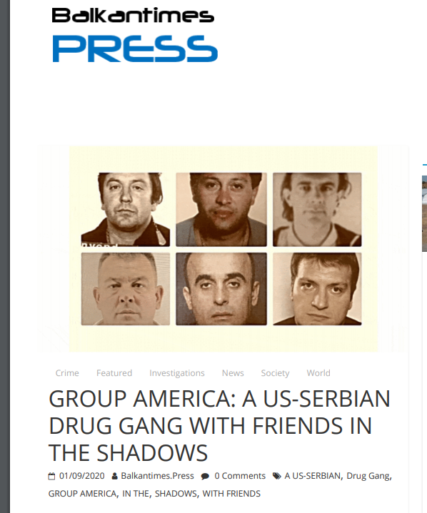 According to Serbian newspaper “Express,” sailor Aleksander Kavaja is a close relative— and maybe even the grandson—of a famous Serbian mobster named Nikola KAVAJA, founder of a criminal Serbian brotherhood.
According to Serbian newspaper “Express,” sailor Aleksander Kavaja is a close relative— and maybe even the grandson—of a famous Serbian mobster named Nikola KAVAJA, founder of a criminal Serbian brotherhood.
The family surname, Kavaja, is famous in Montenegro and across the former Yugoslavia.
Nikola Kavaja, now deceased, was famous in Yugoslavia, where he was known as “Enemy of the State Number One” for attempting to assassinate Marshal Josip Broz Tito on four separate occasions.
Kavaja was described by journalists as an assassin who worked for the the CIA, as well as the godfather of a famous Serbian Don in New York named Boško Radonjić. He was also close with Majko Miljanić and Zoran Jakšić, the leaders of a drug network known as “Group America.”
While Nikola Kavaja may not have had a parking pass on his windshield for CIA headquarters in Langley, Virginia, he didn’t need one. His fame preceded him wherever he went.
A 1997 document released by the CIA after a FOIA request included “excerpts from extensive source reporting over the years.”
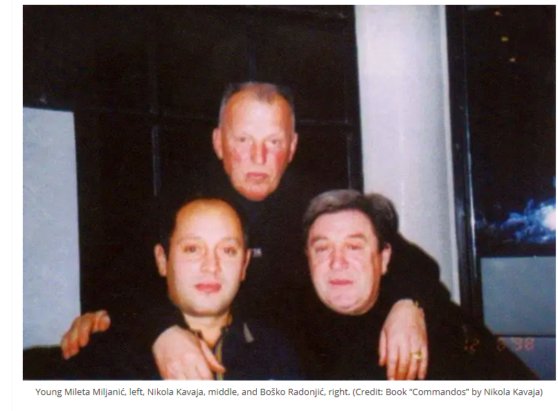 “Kavaja and his associates feel that the time had come when more forceful and affirmative steps must be taken if the world was to avoid a complete take-over by Communism.”
“Kavaja and his associates feel that the time had come when more forceful and affirmative steps must be taken if the world was to avoid a complete take-over by Communism.”
Kavaja was described as “an opportunist, a bully, and an untrustworthy type of person primarily interested in himself.” Whether this was viewed as good or bad remained unclear.
CIA assassin Nikola Kavaja sat down in 2006 for an interview with the venerable Paris Review. Here’s how it began:
INTERVIEWER
You were a World War II prisoner, a Communist soldier, a CIA hit man, a hijacker, and now you’re a fugitive on the run. Where to begin?
NIKOLA KAVAJA
Write down my name. N-i-k-o-l-a K-a-v-a-j-a. You can call me Nik. Do you want some schnapps?
Who is Nikola Kavaja?
It was a salubrious opening.
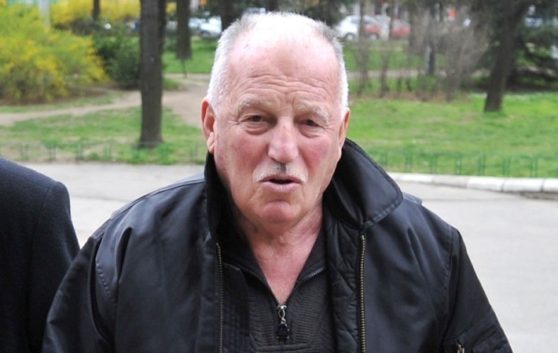 Over a period of three days, and what the writer said were “quite a few shots of Schnapps,” Nikola Kavaja described his career— as a prisoner in Albania during World War Two, a Communist soldier, a CIA hit man, a hijacker, and being wanted by the FBI— to author Christopher Stewart, in a profile titled “Assassin.”
Over a period of three days, and what the writer said were “quite a few shots of Schnapps,” Nikola Kavaja described his career— as a prisoner in Albania during World War Two, a Communist soldier, a CIA hit man, a hijacker, and being wanted by the FBI— to author Christopher Stewart, in a profile titled “Assassin.”
Stewart said he had been writing a book on Serbian warlord Arkan when he met Kavaja, a 73- year old fugitive from the U.S. government living in Belgrade.
Remember the war in the Balkans? It had been like visiting some earlier more primitive time where “warlords” like Arkan committed acts of genocide against their neighbors for ostensibly religious reasons.
Nikola Kavaja attempted to assassinate Yugoslav strongman Marshall Tito…on four separate occasions. He got in trouble with the law when he began bombing Yugoslavia’s embassies and Yugoslav consulates around the country.
He planted a series of six bombs in Yugoslavian embassies and consulates in the US and Canada for a Serb emigre terrorist group.
“The six bombs lit our hearts on fire,” chanted the group’s members during Tito’s visit to the US in 1971.
Then, while out on bail, Kavaja became, according to another account, “the first idiot to try hijacking a plane and flying it into a building.
(He later said Al Qaeda should have paid him royalties for coming up with the scheme.” )
Until fate—and cooler heads—prevailed, he was planning on taking the airliner he’d just hijacked in the U.S. while out on bail awaiting trial, and force it to fly to Southern Europe, where he planned to dive-bomb the airliner into Yugoslavian Communist party headquarters in Belgrade.
There was confusion over what to call him. The Chicago Tribune settled for “HIJACKER JAILED IN BOMBING.”
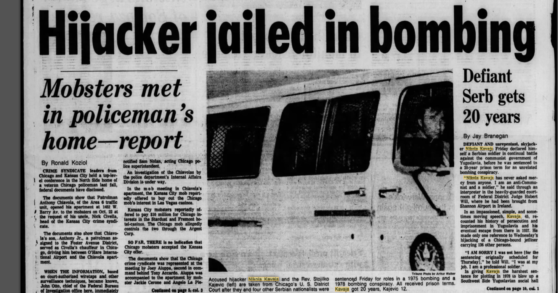 Nikola Kavaja’s less-headline worthy accomplishments included being known as the godfather of Boško Radonjić, a famous don of the New York Serbian underground.
Nikola Kavaja’s less-headline worthy accomplishments included being known as the godfather of Boško Radonjić, a famous don of the New York Serbian underground.
He was a close friend and mentor to Mile Majko Miljanić, the Drug Kingpin of an up-and-coming narco-trafficking clan in Montenegro called “Group America.”
That’s what first brought me up short. “Group America?”
“Another way of saying “CIA”
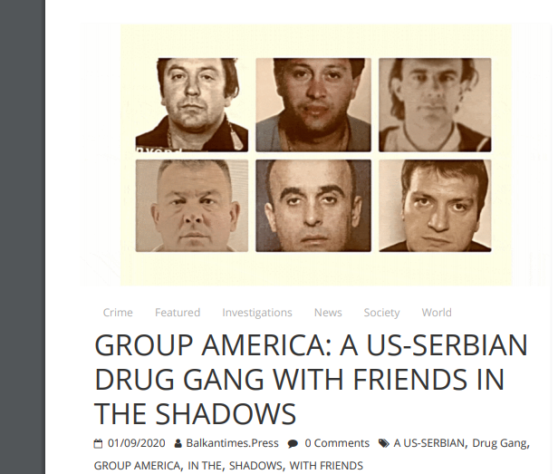 In international diplomatic and law enforcement circles, newspapers in Europe and South America have reported, there is considerable opinion that “Group America” was just another way of saying “CIA.”
In international diplomatic and law enforcement circles, newspapers in Europe and South America have reported, there is considerable opinion that “Group America” was just another way of saying “CIA.”
I learned that the Organized Crime and Corruption Reporting Project—the network of investigative journalists that exposed money laundering and the trillions parked illegally offshore in the Panama Papers—had done a whole series of reports on Group America, which it called “A U.S.-Serbian Drug Gang with Friends in the Shadows.”
But thankfully, there are still contributions to be made, especially since the OCCRP stories add the disclaimer “It’s unlikely that Group America had anything to do with the Gayane — it’s not their style.”
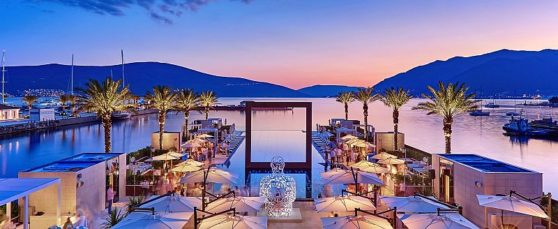 Because of my investigations into drug trafficking through Florida while researching “Gangster Planet, I have some insight into who some of Group America’s friends in the shadows might be.
Because of my investigations into drug trafficking through Florida while researching “Gangster Planet, I have some insight into who some of Group America’s friends in the shadows might be.
One in particular has a half-billion-dollar investment right next door to Kotor, has experience with drug trafficking, and influence with the Serbia Mafia.
No one has yet mentioned Oleg Deripaska in connection with Group America, and the omission speaks volumes.
Back to the Future
The story began simply enough.
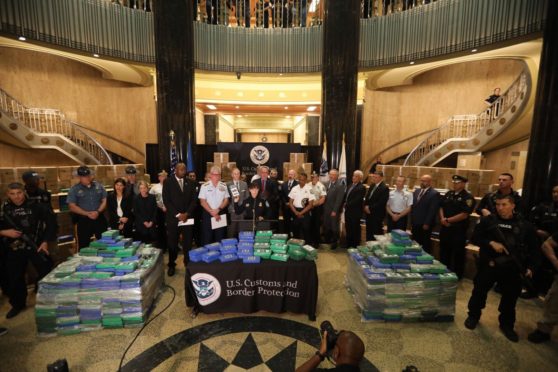 By the time authorities finished searching the MSC Gayane three days after it was interdicted, it had been scoured with fiber optic scopes, x-ray scanning trucks, and drug sniffing dogs. They’d carted off nearly 20 tons of cocaine.
By the time authorities finished searching the MSC Gayane three days after it was interdicted, it had been scoured with fiber optic scopes, x-ray scanning trucks, and drug sniffing dogs. They’d carted off nearly 20 tons of cocaine.
Friday was to be the Big Reveal.
But the news conference announcing the massive drug bust vibed hinky from the start.
Representatives from a half dozen local state and federal law enforcement agencies had been posed in a wedge-like formation standing in front of a wall made up of bricks of bubble-wrapped cocaine piled artfully behind them.
They were taking a bow. Displaying the goods. It’s called “drug porn.” They probably learned it from the Mexicans, who have more drugs to display at news conferences than we do.
They took turns at the podium. But, oddly, authorities didn’t have much to say. They wouldn’t tell how they found the coke, or if the big bust had been the result of a tip.
The ship had been pulled in for a secondary inspection Sunday night. It was routine. Things evolved from there.
The Philadelphia Inquirer was the first to notice. “Officials demurred from saying what had led them to the MSC GUYANE, the international cargo freighter on which they made their record-breaking discovery.”
Reporter Jeremy Roebuck from the Inquirer was clearly annoyed. “They cited routine port inspections, and made vague references to intelligence partners,” he wrote.
“Authorities also remained circumspect about the role of the six members of ship’s crew they’ve placed under arrest.”
Three days later, when the U.S. Attorney announced two seamen from the ship had confessed, and pled guilty, the confessions and guilty pleas were immediately sealed.
“Massive and stunning”
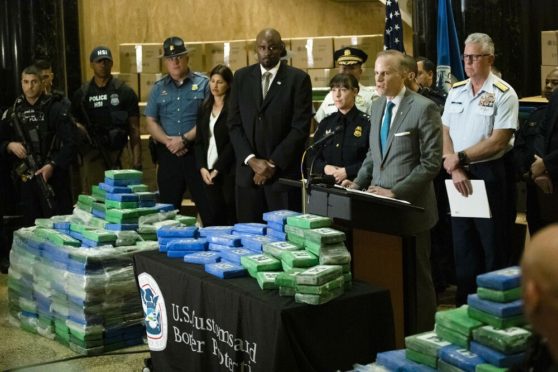 “The massive and stunning drug seizure is one of the largest in our nation’s history,” said U.S. Attorney William W. McSwain.
“The massive and stunning drug seizure is one of the largest in our nation’s history,” said U.S. Attorney William W. McSwain.
Casey Darst, director of U.S. Customs (CBP) in Baltimore, said, “The seizure of a record amount of cocaine sent messages to all seafarers and others that serious consequences awaited them if they tried to smuggle narcotics through the United States.”
US Attorney William M. McSwain said mega-dittos to that.
Durst helpfully added, “Laid end to end, the packaged bricks of cocaine would cover a distance of about two-and-a-half miles.”
What I had a hard time visualizing wasn’t a yellow brick road two-and-a-half miles long. It was what a government law enforcement official looks like when he’s “demurring.”
“What we investigative is part of our tradecraft, so I can’t go into that,” explained Marlon Miller, special agent in charge of Homeland Securities Investigations.
“This investigation is ongoing,” said U.S. Attorney William W. McSwain. “The situation is very fluid.’
Was that why the case was totally sealed?
U.S. Attorney William M. McSwain’s strategy appears to have resulted in a deliberate cover-up of officially-sanctioned drug trafficking, larger than any seen in the U.S. since the days of Oliver North and Iran Contra. One goal was to put the case on the back burner until after the election.
No more misunderestimation
 U.S. Attorney McSwain, a staunch Trump supporter and law & order Republican, used the news conference to get a few things off his chest. Speaking directly to whoever had been responsible for the 20 tons of cocaine, he taunted them for their loss.
U.S. Attorney McSwain, a staunch Trump supporter and law & order Republican, used the news conference to get a few things off his chest. Speaking directly to whoever had been responsible for the 20 tons of cocaine, he taunted them for their loss.
“You thought you could breeze into our port and the leave with enough cocaine to destroy millions of lives without getting caught,” McSwain sneered. “You thought you were clever. You were wrong.”
“You underestimated our city, you underestimated our law enforcement capabilities, and our commitment to decimating the illegal and immoral drug trade.”
It was mis-underestimation all around.
McSwain was steaming the next day as well. Stung by the apparent lack of enthusiasm shown by the general public for the massive coke bust, he took to Twitter.
“This is a massive, stunning amount of cocaine,” U.S. Attorney William M. McSwain enthused. “One of the largest drug seizures in United States history. This volume of cocaine could kill millions – MILLIONS – of people.”
Well, yeah, some skeptic tweeted back, if you do it all at once.
Questions were raised
I began to keep track of “anomalies” in the case. They weren’t difficult to find.
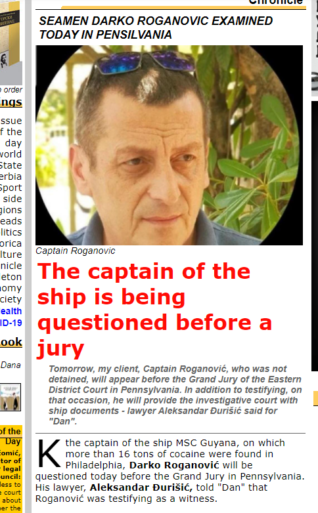 Ivan Durasevic’s Facebook profile, for example, says he’s from Kotor. His role was discovered after authorities found traces of cocaine on his hands. He admitted to investigators that he’d been recruited by the ship’s “chief officer,” who could only have been the ship’s captain, although his name was not disclosed.
Ivan Durasevic’s Facebook profile, for example, says he’s from Kotor. His role was discovered after authorities found traces of cocaine on his hands. He admitted to investigators that he’d been recruited by the ship’s “chief officer,” who could only have been the ship’s captain, although his name was not disclosed.
Both he and the Samoan crewmen who immediately pled guilty with him told authorities the scheme was led by Darko Roganovich, the ship’s captain.
Yet authorities released Roganović almost immediately after the seizure, and he hopped a plane back to Montenegro.
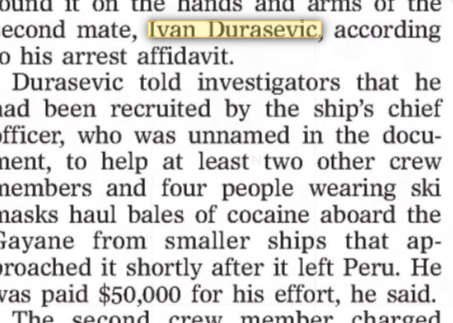 That’s a pretty big anomaly right there.
That’s a pretty big anomaly right there.
Nor has there been any mention by the U.S. Attorney, in either court filings or press briefings, of any connection between the massive seizure and any of the other MSC container ships which have been caught recently committing indiscretions.
When the container ship MSC Gayane was busted in Philadelphia, it marked the fourth time an MSC Mediterranean Shipping Company vessel has been involved in a major drug bust… just since the beginning of the year.
Another MSC cargo vessel, the MSC Desiree, “was caught while calling at Philadelphia” carrying a stash of cocaine worth $38 million.
That’s two… just at the Port of Philadelphia.
Almost 1.5 tons of cocaine was found on another MSC contains ship, the MSC Carlotta, at the port of Newark.
Months later, the MSC Carlotta was caught again… this time in Callao, Peru, carrying 2.2 tons of cocaine.
“It was a container ship crime wave.”
 Was a single drug trafficking organization responsible for the recent drug moves on MSC container ships? Was the question even being asked?
Was a single drug trafficking organization responsible for the recent drug moves on MSC container ships? Was the question even being asked?
Mediterranean Shipping Company is a private company, owned by a private party, who lives in Naples, Italy. His name is Gianluigi Aponte.
Reported the Journal of Commerce, “Mediterranean Shipping is private – no annual reports, no filing, or worries about offhand remarks moving the stock and bringing in government lawyers.”
Aponte is an Italian billionaire with a net worth of around $9 billion, and one of the biggest players in Europe’s maritime industry, with more than 400 ships under his company’s control.
Aponte was recently at the heart of an influence scandal in France which embroiled French President Emmanuel Macron’s chief of staff, accused of influence-peddling in cases involving the Mediterranean Shipping Company.
There were other factors to consider, as well.
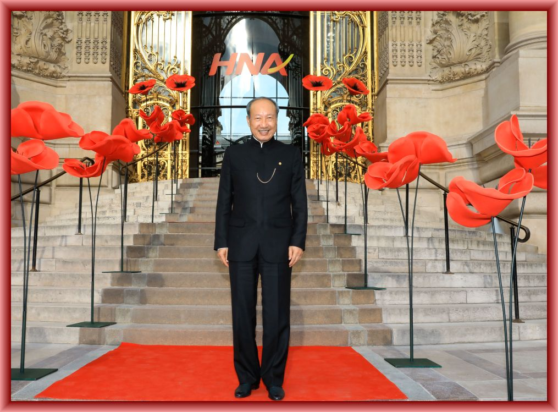 The MSC Gayane, MSC Carlotta, and MSC Desiree had until recently been owned by SinOceanic Shipping, a wholly-owned subsidiary of the Chinese HNA group, which sold the MSC Desiree and the MSC Gayane to Blue Star Shipping and JP Morgan last year.
The MSC Gayane, MSC Carlotta, and MSC Desiree had until recently been owned by SinOceanic Shipping, a wholly-owned subsidiary of the Chinese HNA group, which sold the MSC Desiree and the MSC Gayane to Blue Star Shipping and JP Morgan last year.
SinOceanic still had responsibility for providing crew and management services to all three ships. And HNA Group desperately needed the money, as it teetered on the edge of bankruptcy.
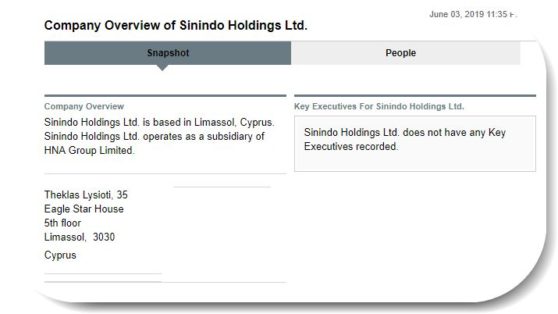 So, while ship ownership ricochets back and forth between Bermuda, Norway, Switzerland, and God knows where else… Dig deep enough, and indications point to the Chinese as having culpability.
So, while ship ownership ricochets back and forth between Bermuda, Norway, Switzerland, and God knows where else… Dig deep enough, and indications point to the Chinese as having culpability.
My money’s on the Chinese. So is Steve Bannon’s.
Dubious and dubiouser
Now we come to the most dubious allegation in the government indictment. How a go-fast boat was supposed to pull alongside a massive cargo ship in open seas–and in the dark, yet!– is a mystery to anyone who’s ever been to sea.
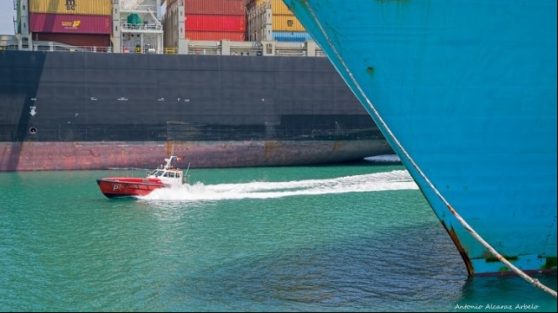 “Ivan Durasevic admitted his role to authorities in bringing cocaine onto the vessel after being offered $50,000 by the chief officer. Others assisted in loading the cocaine into containers. The whole process took approximately 30 to 40 minutes,” stated the criminal complaint.
“Ivan Durasevic admitted his role to authorities in bringing cocaine onto the vessel after being offered $50,000 by the chief officer. Others assisted in loading the cocaine into containers. The whole process took approximately 30 to 40 minutes,” stated the criminal complaint.
“According to Durasevic, upon leaving Peru he got a call from the chief officer to come down to the deck, where he saw nets on the port side stern by the ship’s crane. Durasevic and four others, some wearing ski masks, pushed the nets, containing blue or black bags with handles, into two of the holds.”
“Durasevic used the ship’s crane to load cocaine in bags onto the ship from a flotilla of go-fast speedboats. after the MSC Guyane left the port of Barranquilla, Peru.”
The Samoan crewman, Tiasaga said six boats approached the MSC Gayane during the night. Durasevic operated the crane, swinging bag after bag of cocaine onboard.
The two men’s stories seem to match. So, too, does that told by the third crewman to plead guilty, Vladimir Penda.
“On multiple occasions during the MSC Gayane’s voyage at sea, crew members, including Penda, helped load bulk cocaine onto the vessel from speedboats that approached under cover of darkness, traveling at high speeds,” the U.S. Attorney’s office said in a statement.
“Crew members used the Gayane’s crane to hoist cargo nets full of cocaine onto the vessel and then stashed the drugs in various shipping containers, “said the plea filing by Penda, who was part of the team bringing the drugs aboard.
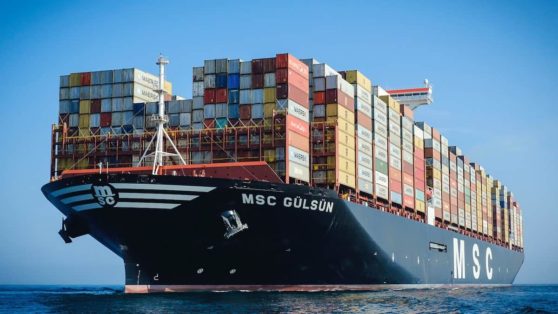 “Under cover of darkness, Penda helped load bulk cocaine onto the vessel from speedboats that approached at high speeds. Crew members hoisted the cocaine from cargo nets filled with cocaine onto the deck of the ship, and then stashed the drug in various containers.”
“Under cover of darkness, Penda helped load bulk cocaine onto the vessel from speedboats that approached at high speeds. Crew members hoisted the cocaine from cargo nets filled with cocaine onto the deck of the ship, and then stashed the drug in various containers.”
So does the story told by Aleksander Kavaja.
“Using the ship’s crane, they pulled duffel bags filled with wrapped cocaine off the smaller boats and onto the Gayane’s deck before splitting the individual bricks among seven cargo containers carrying wine, vegetable extract, Chilean dried nuts, scrap metal, and other legitimate goods bound for Europe, Africa, and Asia.”
To recap: According to the criminal complaint, the Gayane’s crew brought the drugs aboard during rendezvous with small boats at sea, then concealed the narcotics in containers.
Neither Aleksander Kavaja nor the court documents shed any light Thursday on who was ultimately behind the shipment.
And while Aleksander Kavaja is facing a maximum sentence of lifetime imprisonment, with a mandatory minimum of 10 years, his plea agreement includes no requirement that he cooperate with the ongoing probe.
That’s way beyond strange.
Old salty dogs weigh in
 Still, with the seamen’s stories seemingly corroborating each other, is there room left for any doubt?
Still, with the seamen’s stories seemingly corroborating each other, is there room left for any doubt?
Well, yes. Most industry observers don’t believe the story. On an industry website called the “Old Salt Blog,” I found this headline: “The Bizarre Smuggling Scheme on MSC Gayane.”
“How the drugs came to be aboard the container ship is a bizarre and almost unbelievable story,” reported Rick Spilman, a naval architect and maritime observer, “involving the ship’s crew loading drugs at sea from more than two dozen small boats, operated by smugglers wearing ski masks.”
“What strains credulity is the notion that two or three of the ship’s crew hoisted and stowed 16 tons of drugs in less than an hour,” wrote ‘old salty dog’ Spilman.
“Loading the drugs at sea from small boats seems to be far riskier and more dangerous than loading the drugs into a container sealed before being loaded onboard ship.”
“There is no way the ship’s captain could not have known at some point that the vessel ‘was stopped at sea,” commented another observer. “The bridge’s telegraph keeps a written log of all engine room transactions, reviewed in real-time by the company operating the ship.”
 “If the captain knew, then the ship’s operator knew as well.
“If the captain knew, then the ship’s operator knew as well.
“Occam’s Razor dictates that 16-30 tons of cargo was not transferred at sea but was transferred as part of routine onloading in port. Logic also dictates that the operator was complicit.”
“It’s a simple case. This is a systemic trafficking operation,” wrote another observer. “The crew received a prepared story in case they got caught, normal procedure for drug cartels and their mules.”
“All and all, not so bizarre, except to the uninitiated. The crew are lying, and in lying to protect their superiors from sanction, their families get paid while they take the heat and do time.”
In Kotor, where most of the crewmen are from, they don’t believe the story either.
The larger question is: why were the drugs delivered at sea?” Most goods smuggled by container are loaded onshore. Why would authorities be instructing seamen pleading guilty to say they loaded the drugs in the open ocean? What were they protecting?
JP Morgan…Chaste?
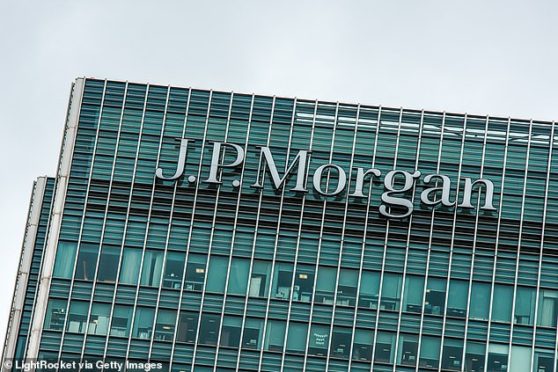 One week later, it was JP Morgan who had a big problem. The company was being speculated about in the business press in unflattering ways.
One week later, it was JP Morgan who had a big problem. The company was being speculated about in the business press in unflattering ways.
“US Customs just seized a ship owned by JPMorgan after authorities found $1 billion worth of drugs on it,” reported Business Insider.
Snarky headlines were the order of the day. “Jamie, it Ain’t Bitcoin: JP Morgan Involved in $1 Billion Cocaine Bust.”
“JP Morgan boss Jamie Dimon once slammed bitcoin as fraud, saying it’s only useful “if you were a drug dealer [or] a murderer.”
“So, imagine his surprise when a ship owned by his bank— a client asset in a maritime strategy offered by JPMorgan Asset Management—was seized this week when authorities found $1.3 billion of cocaine inside.”
Dutifully, Business Insider also reported: “It is operated by the Switzerland-based MSC.”
But Mediterranean Shipping Lines did not achieve the same satisfying sense of schadenfreude that JP Morgan did.
 They were even talking about JP Morgan at a website for black feminists. Called “Lipstick Alley,” where I came across this brilliant headline: “IS JP MORGAN THE ULTIMATE PLUG?”
They were even talking about JP Morgan at a website for black feminists. Called “Lipstick Alley,” where I came across this brilliant headline: “IS JP MORGAN THE ULTIMATE PLUG?”
You may not spend much time at Lipstick Alley, a site. So, you may not know what a “plug” is: Your supplier, basically your drug dealer, More precisely, according to the Urban Dictionary, your big-time drug dealer.
A ‘plug’ supplies the ‘connects’ with large quantity of drugs, which the ‘connects’ in turn distribute to dealers. Helpfully, Urban Dictionary used it in a sentence.
“OH, SHIT nigga! You THE PLUG!”
The black feminists who frequent Lipstick Alley probably don’t often address themselves to inequities in the Western banking system..
They may be unaware that it is the largest bank in the United States, and the sixth largest in the world, whose total assets add up to very cool $2.535 trillion, but they’ve all heard of JPMorgan.
What the ladies at Lipstick Alley do bring to the subject is a certain amount of street cred:
“It’s just Black and Hispanics gang banging once the coke gets on the street,” opined one.
“It always gets interesting once you start following the money,” wrote another.
“All these container ships getting busted….somebody high up must be snitching,” suggested a third.
It was a pretty sophisticated analysis. Also, I was to learn, it was true.
STAY TUNED.
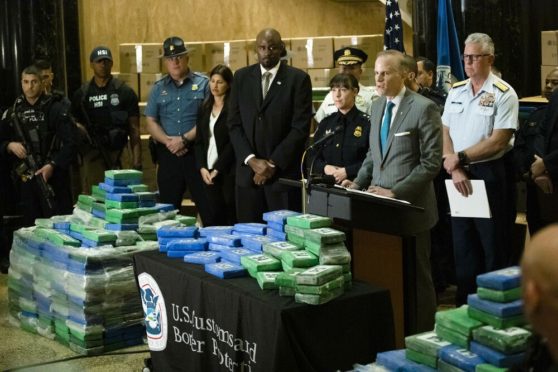
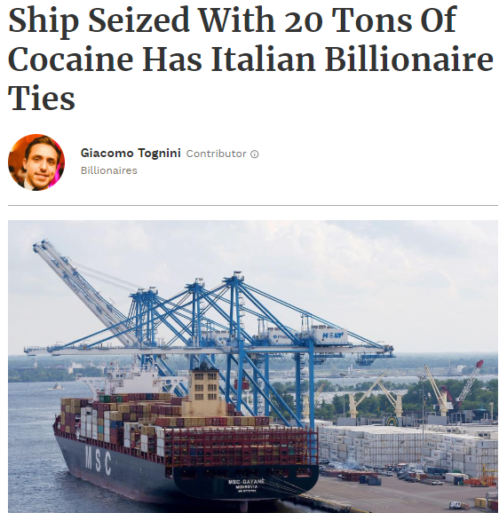
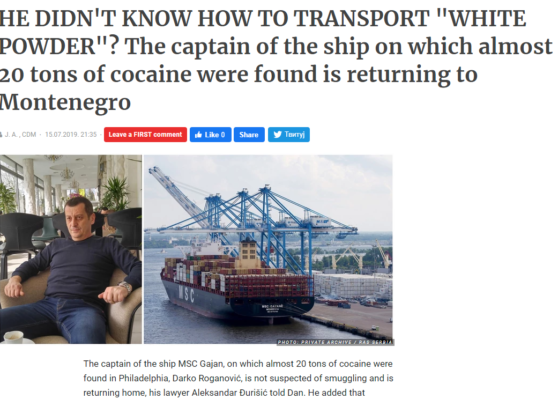
2 responses to “The CIA, a ‘law and order’ U.S. Attorney, & 20 tons of cocaine”
“You thought you could breeze into our port and the leave with enough cocaine to destroy millions of lives without getting caught,” McSwain sneered. “You thought you were clever. You were wrong.” Translate that as “you tried to do business on your own on our turf”.
About the loading from small ships offshore. Does m/s Gayane have any cranes at all? There is a war going because when the system goes down one of the assets not loosing value will be drugs.
Nikola Kajava intending to kamikaze a plane seems like a lie.